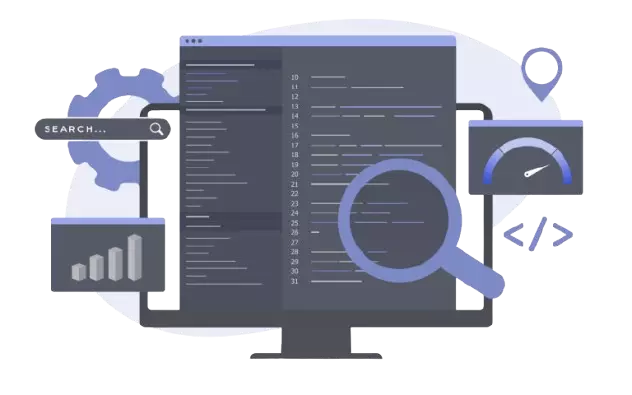On-Page SEO
On-Page optimization is where we fine-tune your website content to ensure every page is fully optimized. This includes refining your URLs, meta tags, headers, images, and icons so both search engines and visitors can easily navigate and understand your website.
We also improve internal linking, enhance readability, and make sure your keywords are naturally placed where they matter most. By focusing on these details, we help Google recognize your pages for higher rankings and attract more clicks!
What is On Page SEO?
On-page SEO involves optimizing elements directly on your website to enhance search engine visibility in organic results on platforms like Google, Yahoo, and Bing. It’s crucial for ensuring that your content is easily discoverable and user-friendly.
- Content That Resonates. Your content needs to not only be relevant but also valuable to your audience. We make sure it answers their questions and speaks directly to their needs, all while integrating the right keywords naturally. We avoid keyword stuffing, keeping the flow natural, and ensuring your content is easy to read and understand.
- Optimized Title Tags and URL Structure. Create simple, clear, and keyword-rich URLs to ensure that both search engines and users can easily understand the content and purpose of each page. Additionally, we optimize meta titles and descriptions to be both compelling for users and contextually accurate for search engines, enhancing click-through rates while improving the page’s visibility and relevance in search results.
- Website Architecture. A well structured website is critical for both search engine optimization and user engagement. From an SEO perspective, a logical site architecture allows search engine crawlers to efficiently index all pages, improving visibility in search results. For users, intuitive navigation and organized content enhance the overall experience, reduce bounce rates, and encourage longer site visits ultimately contributing to higher conversion rates and customer satisfaction.

How I Work:
Below, we have discussed the top on-page optimization techniques that marketers must use to achieve the desired business and marketing goals. Let’s see how to do on-page SEO for better results:
- Optimize Title Tags
- Write an Attractive Meta Description
- Create a Keyword-rich URL
- Develop SEO-friendly Content
- Use Header Tags
- Build External Links
- Add Internal Links
- Optimize Images Using Alt Tags
I provide a full suite of On-Page SEO services, including:
- Meta Tag Optimization: Crafting titles and descriptions that improve click-through rates.
- Content Optimization: Ensuring keyword integration, structure, and value in your content.
- Header Tag Improvements: Organizing content with optimized H1, H2, and H3 tags.
- Internal Linking Strategy: Enhancing user navigation and site authority.
- Image Optimization: Using alt texts and reducing file sizes for better SEO performance.
Here are the SEO tools that I used to do On Page SEO






FAQ
Common FAQS of On PageSEO?
Many website audit tools offer free versions, providing access to basic features that can help identify common performance and SEO issues. However, these free tiers often come with limitations in functionality, data access, and reporting depth, which may restrict the scope and effectiveness of the audit compared to premium or professional-grade tools.
The choice of website audit tools largely depends on the type of audit you intend to conduct, the size and complexity of your site, and your available budget. Industry-leading platforms like Ahrefs and Semrush offer robust, in-depth auditing capabilities ideal for comprehensive SEO analysis. Additionally, Google's free tools—such as Google Search Console and PageSpeed Insights—are user-friendly and effective for identifying key performance and visibility issues, though they may have limitations in scope compared to premium solutions.
A content audit is a structured evaluation of a website’s existing content aimed at assessing its quality, relevance, and performance. This process involves systematically reviewing all content assets to determine how well they align with business objectives, audience needs, and SEO best practices. The primary goals are to identify gaps or outdated material, optimize content strategy, enhance user experience, and improve overall visibility and engagement across search engines and social media platforms.
